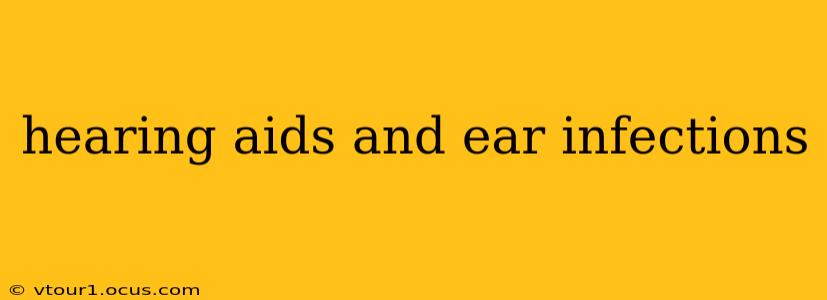Hearing aids can significantly improve the quality of life for millions, but concerns about ear infections often arise. This comprehensive guide addresses common questions and misconceptions surrounding hearing aids and the risk of ear infections. We'll explore how to mitigate risks and maintain ear health while using hearing aids.
Can Hearing Aids Cause Ear Infections?
While hearing aids themselves don't directly cause ear infections, they can create an environment that's more conducive to their development. The presence of a foreign object in the ear canal, coupled with moisture and potentially the build-up of earwax, can increase the risk of infection. It's crucial to understand that this risk is manageable with proper hygiene and regular maintenance. The type of hearing aid (e.g., behind-the-ear, in-the-ear) can also influence the risk level, with in-the-ear devices potentially presenting a slightly higher risk due to their closer proximity to the ear canal.
What are the Signs of an Ear Infection in Hearing Aid Users?
Recognizing the symptoms of an ear infection is vital for prompt treatment. Common signs include:
- Pain or discomfort in the ear: This is often a significant indicator.
- Redness or swelling in the ear canal: Visible inflammation can suggest an infection.
- Discharge (pus or fluid) from the ear: This is a clear sign of infection and requires immediate medical attention.
- Hearing changes (worsening or fluctuating hearing): While hearing loss is a primary reason for using hearing aids, a sudden change could signal an infection.
- Fever: A fever, especially in conjunction with other symptoms, strongly suggests an infection.
- Itching or fullness in the ear: These sensations can be precursors to or symptoms of an infection.
How Can I Prevent Ear Infections While Wearing Hearing Aids?
Prevention is key. Here are some crucial steps to minimize the risk of ear infections:
- Regular Cleaning: Clean your hearing aids daily as recommended by your audiologist. This involves removing earwax and debris. Use the appropriate cleaning tools and solutions provided by your audiologist.
- Proper Handling: Always wash your hands before handling your hearing aids to prevent the transfer of germs.
- Moisture Control: Use a dehumidifier or drying kit to remove moisture from your hearing aids after use, especially in humid environments or after sweating.
- Regular Check-ups: Schedule regular appointments with your audiologist for hearing aid maintenance and ear canal checks.
- Avoid Swimming with Hearing Aids: Remove hearing aids before swimming or showering to prevent water damage and infection. If swimming is unavoidable, use waterproof hearing aid covers or cases.
- Earwax Management: Regular earwax removal by a professional can reduce the risk of blockages that can lead to infections.
Are Certain Types of Hearing Aids More Prone to Causing Ear Infections?
In-the-ear (ITE) and completely-in-canal (CIC) hearing aids, due to their placement deep within the ear canal, might pose a slightly elevated risk compared to behind-the-ear (BTE) devices. However, with diligent cleaning and maintenance, this increased risk is significantly minimized. The key is proactive care, regardless of the hearing aid type.
What Should I Do If I Suspect an Ear Infection?
If you suspect an ear infection, contact your doctor or audiologist immediately. Do not attempt to self-treat. Delaying treatment can worsen the infection and potentially lead to more serious complications. Your healthcare provider will be able to diagnose the infection and prescribe the appropriate treatment, such as ear drops or oral antibiotics. They may also advise you to temporarily discontinue using your hearing aids until the infection clears.
How Can I Keep My Ears Clean and Healthy While Using Hearing Aids?
Maintaining good ear hygiene is paramount. This involves gentle cleaning of the visible outer ear and regular professional earwax removal. Avoid using cotton swabs or other sharp objects to clean your ears, as this can damage the ear canal and potentially push earwax further in. Follow your audiologist's recommendations for cleaning your hearing aids and ears.
This guide provides general information. Always consult with your healthcare provider or audiologist for personalized advice and treatment specific to your situation. Regular maintenance and proactive care can significantly reduce the risk of ear infections while enjoying the benefits of hearing aids.
